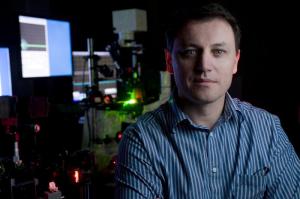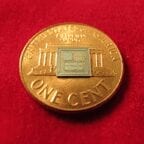Up to 30 times more deadly to cancer cells
Using light-harvesting nanoparticles to convert laser energy into “plasmonic nanobubbles,” researchers at Rice University, the University of Texas MD Anderson Cancer Center and Baylor College of Medicine (BCM) are developing new methods to inject drugs and genetic payloads directly into cancer cells. In tests on drug-resistant cancer cells, the researchers found that delivering chemotherapy drugs with nanobubbles was up to 30 times more deadly to cancer cells than traditional drug treatment and required less than one-tenth the clinical dose.
“We are delivering cancer drugs or other genetic cargo at the single-cell level,” said Rice’s Dmitri Lapotko, a biologist and physicist whose plasmonic nanobubble technique is the subject of four new peer-reviewed studies, including one due later this month in the journal Biomaterials and another published April 3 in the journal PLoS ONE. “By avoiding healthy cells and delivering the drugs directly inside cancer cells, we can simultaneously increase drug efficacy while lowering the dosage,” he said.
Delivering drugs and therapies selectively so they affect cancer cells but not healthy cells nearby is a major obstacle in drug delivery. Sorting cancer cells from healthy cells has been successful, but it is both time-consuming and expensive. Researchers have also used nanoparticles to target cancer cells, but nanoparticles can be taken up by healthy cells, so attaching drugs to the nanoparticles can also kill healthy cells.
Rice’s nanobubbles are not nanoparticles; rather, they are short-lived events. The nanobubbles are tiny pockets of air and water vapor that are created when laser light strikes a cluster of nanoparticles and is converted instantly into heat. The bubbles form just below the surface of cancer cells. As the bubbles expand and burst, they briefly open small holes in the surface of the cells and allow cancer drugs to rush inside. The same technique can be used to deliver gene therapies and other therapeutic payloads directly into cells.
This method, which has yet to be tested in animals, will require more research before it might be ready for human testing, said Lapotko, faculty fellow in biochemistry and cell biology and in physics and astronomy at Rice.
via Science Daily ᔥ
Bookmark this page for “Single-Cell Cancer Targeting” and check back regularly as these articles update on a very frequent basis. The view is set to “news”. Try clicking on “video” and “2” for more articles.
>









